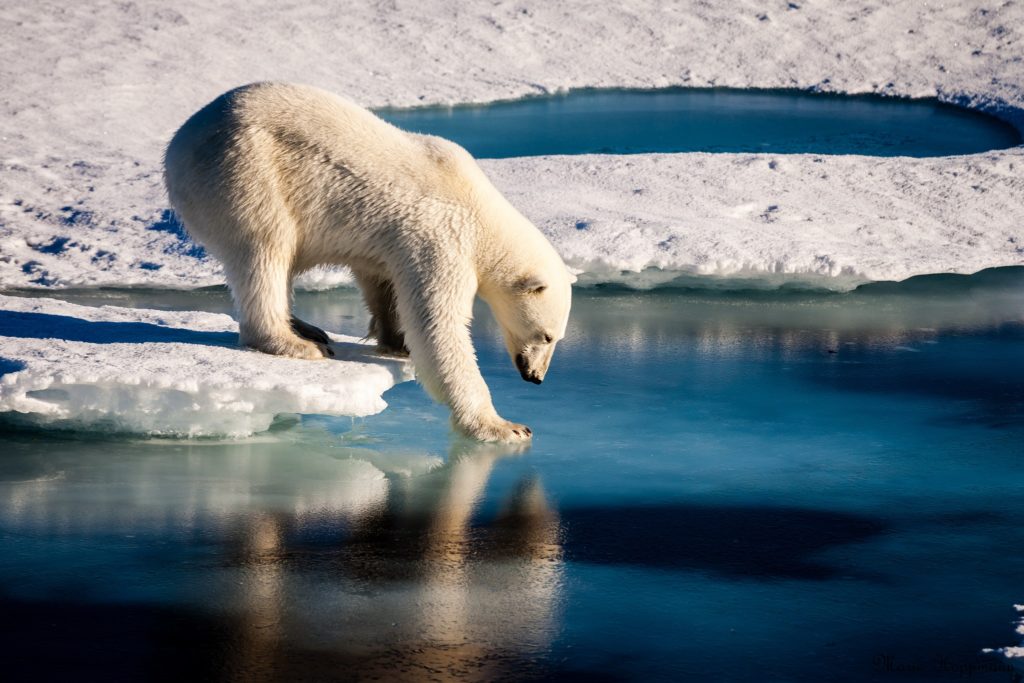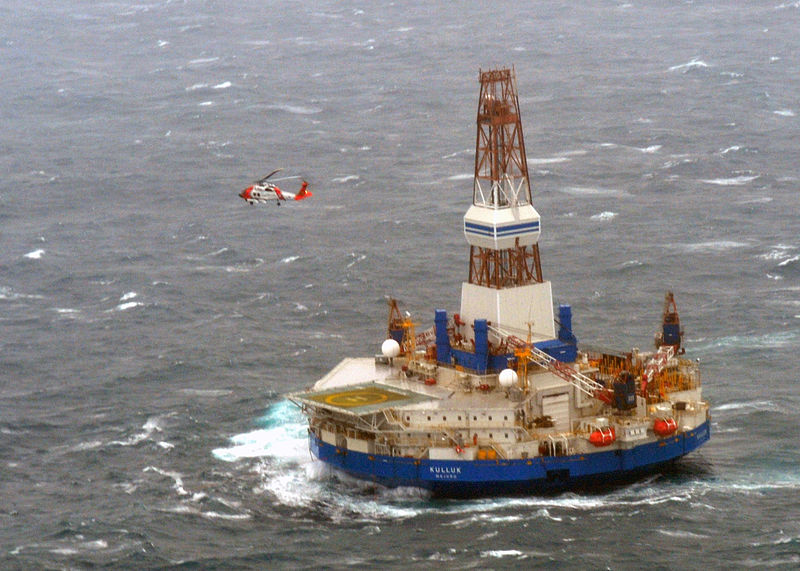The Case Against Offshore Drilling in the Arctic
When you think about the Arctic Ocean, you picture pristine sea ice, polar bears hunting over frozen ocean waters, and whales surfacing for air. The Arctic is home to wildlife found no where else on Earth, like narwhals, walruses and polar bears. And indigenous peoples with rich cultural traditions have thrived in the harsh Arctic elements for thousands of years.
But this unique and unspoiled region is in jeopardy. An oil spill here would be virtually impossible to clean, and the impacts would be devastating to local wildlife and people alike.

The Problem
Oil and Ice Can’t Mix
You’ve probably seen the devastating images of sea otters covered in oil after the Exxon Valdez oil spill in 1989. Nearly 11 million gallons of oil spewed into the ocean over the course of three days. It killed many of the resident orcas in the area, 250 bald eagles, 2,800 sea otters, and over 100,000 sea birds. It impacted the livelihoods of local fishermen and businesses and its effects can still be felt today.
There is no margin for error in the Arctic. A major oil spill would be all but impossible to clean up in these remote and icy waters. It could significantly impact local livelihoods, endanger wildlife and forever change a unique part of the planet that is already facing an uncertain future because of climate change.”
The Exxon Valdez spill occurred close to shore with nearby infrastructure to respond, and it occurred in warmer waters in a relatively temperate part of Alaska.The Arctic, in contrast, is one of the most remote regions on Earth. Offshore drilling in its icy waters is too risky and too much of a threat to both the region and the planet’s climate.
Nearly three decades after the Exxon Valdez spill, clean up technology is still woefully insufficient for such a harsh environment as the Arctic, where ice, fog, intense storms and remote waters virtually guarantee that a spill could not be contained or cleaned. In fact, it could take several days for Coast Guard ships to even reach a spill, and the technology to effectively address it does not yet exist.
So how likely is a spill to happen? Well, according to the Bureau of Ocean Energy Management (BOEM), there’s a 75% chance of one or more large spills over the lifetime of development and production in the Chukchi Sea. And the agency admits that a very large oil spill could result in the death of large numbers of polar bears, bowhead whales, seals, and sea birds.
Case Study: Shell Proves Drilling Isn’t Safe
In 2012, Shell’s Arctic drilling rig, the Kulluk, ran aground near Kodiak Island on its way back from drilling operations in the Beaufort Sea. A Coast Guard report found that Shell failed to recognize the risk, used subpar equipment to deal with the environment and had too little experience dealing with Arctic waters. It was also revealed that Shell rushed to move the Kulluk as a way to avoid paying state taxes to Alaska for keeping it in state waters for more than a year. It’s clear that we can’t trust oil companies to operate safely and responsibly in the Arctic.
An oil spill at the top of the world would be a disaster for the people and wildlife who depend on a healthy Arctic Ocean for survival. Drilling for oil in the Arctic Ocean is risky business—the consequences of a mistake could cause irreparable harm. Until we can ensure the safety of wildlife and the ocean ecosystem, we can’t afford to allow drilling for oil in the Arctic.

The Solution
Keep it Clean
The best way to keep the Arctic Ocean safe is crystal clear: Prevent any spill from occurring in the first place. An ounce of prevention is worth a pound of cure, right? The Arctic is experiencing temperatures warming at twice the rate of the rest of the world. This is literally the last place on Earth we should be expanding offshore drilling. Without effective technology to clean a spill, no exploration should ever begin.